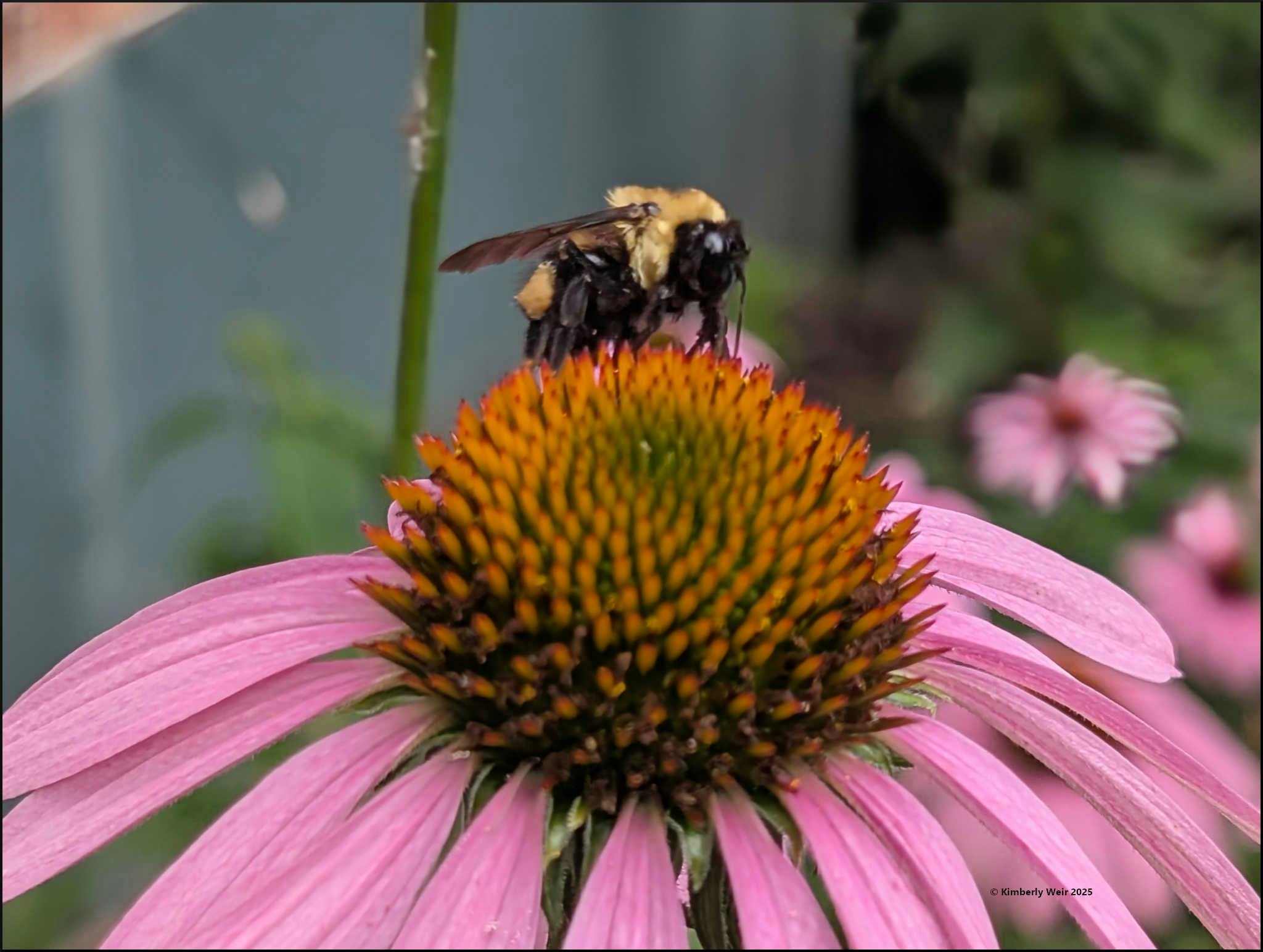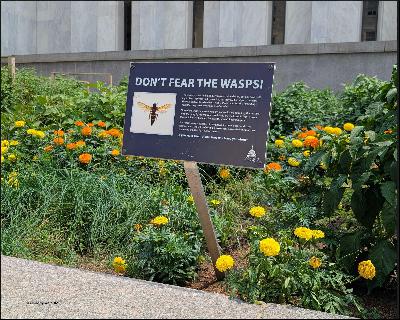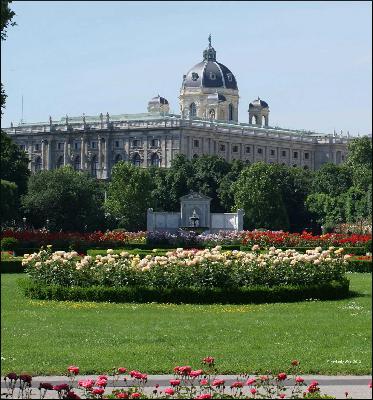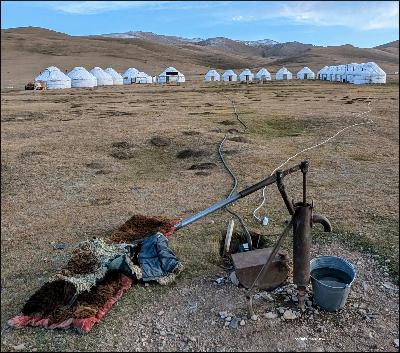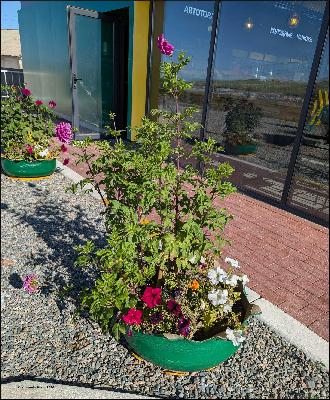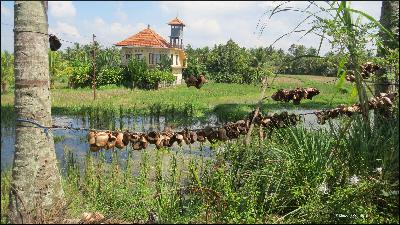Discover Sustainable Planet
Sustainable Planet

Sustainable Planet
Author: Kimberly Weir
Subscribed: 8Played: 43Subscribe
Share
© 2024 Sustainable Planet. All rights reserved.
Description
Sustainable Planet is a podcast hosted by Kimberly Weir and Jorden Dye. Kimberly has a PhD in political science and decades of experience as a university professor. Jorden is Director at a Canadian clean energy think tank.
Delivered to you twice a month, they examine the issues that impact the future of our planet and discuss ways we can live more sustainable lives. Their combined experience allows them to offer an in-depth take on the economic, political, sociocultural, and environmental aspects of sustainability and development, covering topics including consumerism, climate change, waste, and food, water, raw materials, and energy security and conservation.
56 Episodes
Reverse
Following the last episode’s general focus on pollinators, this episode zooms in on bees. From the ethics of beekeeping, why seedless watermelons make bees work overtime, and the unsettling nature of colony collapse disorder, Jorden and Kimberly consider the astonishing diversity of bees. In addition to the legislative acts that promote apiary conservation, individuals can do a lot that matters, including rewilding yards, reducing pesticides, leaving fallen wood, planting natives, supporting local honey, and even “adopting” a bee.
Recommended Resources
About bees
Bee stats
The 3D-printed beehive
Bee legislation
Bee fences
Kentucky bees
Kimberly’s Substack newsletter post
Pollinators do far more than keep our gardens blooming — these tiny workers support global food systems, sustaining a third of the world’s food supply. In this episode, Jorden and Kimberly dig into what’s threatening bees, bats, butterflies, and more — and how rethinking our landscaping choices could help.
The immense ecological and economic importance of pollination is worth over $230 billion in global production. The astonishing diversity of invertebrate and vertebrate pollinators range from bats to beetles to butterflies, yet climate change, habitat loss, pesticides, and cultural habits, like manicured lawns, threaten their survival. From planting clover or violets to creating “pollinator pathways” on balconies and rooftops, Jorden and Kimberly emphasize how small changes can make a big difference. Planting attracting plants, including buckwheat, canola, and sunflowers, is as important as cultural change
Recommended Resources
About pollinators
More about pollinators
Lots of 2024 stats
Threats from climate change
How we can help
Kimberly’s Substack newsletter post
Lawns are cultural icons—but they’re also ecological dead zones. In this episode, Jordan Dye and Kimberly Weir explore how native planting, edible gardens, and rewilding can save water, cut emissions, support pollinators, and make neighborhoods more livable. From Nevada’s “Cash for Grass” program to backyard biodiversity, it’s time to rethink what a beautiful yard really looks like and how the cultural, ecological, and mental health benefits of reconnecting with nature right outside your door.
Recommended Resources
What Cambridge did
What Nevada did
What California did
Colorado, Minnesota, and Maryland passed “pollinator-friendly” laws
Lawn Alternatives for Dogs
Kimberly’s Substack newsletter post
We return home after our series of travel episodes, stepping foot on the environmental money pit disguised as curb appeal. This episode of Sustainable Planet, Jorden and Kimberly explore the historical roots of lawn aesthetics, the significant water and chemical usage associated with maintaining lawns, and the broader social inequities tied to lawn culture. What has become a status symbol, whose maintenance is often mandated by law, the modern lawn needs an update to be more sustainable.
Recommended Resources
The growth of lawn popularity in the US
Paul Robbins’s sociological take on lawn culture
Residential lawns in the US
Resource stats for lawns
Not just a US issue
Why lawns are ecological deserts
Kimberly’s Substack newsletter post
In the last of a four-part series on travel, Jorden and Kimberly finish out their journey, considering sustainable means of travel by focusing on the choices we make once we’ve arrived at our destination. They explore how supporting local businesses, opting for hostels or sleeper trains, and even simple decisions like how we handle laundry or sunscreen can make a meaningful difference for communities and ecosystems. Kimberly shares practical tips from years of international travel—like why letting locals handle your laundry may save water and support economies while Jorden emphasizes the power of spending money directly with small vendors instead of global chains.
The conversation also highlights the hidden sustainability benefits of hostels, the allure of legendary train journeys like the Orient Express, and why reef-safe sunscreen is more than just a buzzword phrase. From intentional packing, minimizing waste, and balancing convenience with long-term environmental impact, the last travel installment considers how slowing down, traveling with purpose, and prioritizing local connections can turn vacations into richer and more sustainable experiences.
Recommended Resources
World Bank tourism data
More World Bank visitor data
Hosteling in Europe
Amazing Southeast Asia and India train trips
The importance of reef-safe sunscreen and comparisons
Kimberly’s Substack newsletter post
In the third of a four-part series on travel, Jorden and Kimberly head abroad, considering the top tourist destinations, whether to visit by land, sea, or air, and just how big of an impact our choices have on the planet.
More people than ever are traveling abroad, and Americans are adding to the numbers, with 48% currently holding a valid passport, contributing to the tourist bucks that accounted for $10.9 trillion of the global GDP and 357 million jobs in 2024. From the most visited cities to the top international airport arrivals, destinations ranging from amusement parks to the world’s most popular landmarks, Jorden and Kimberly consider the impact that tourist traffic and climate change have on these destinations and how countries are coping, along with what airlines and cruise lines are doing (or not) to be more green.
Key Topics Jorden and Kimberly discuss include:
Which country rules as King of Tourism
What the most popular tourist destinations have that the others just don’t
Why international flights are less terrible than domestic legs
How airlines attempt to be sustainable despite less commitment to SAF
Why public transportation will always be the greenest option
How cruises are even worse for the ecosystem than we thought
What Norway is doing to balance the scales of its dependence on tourism and protect its sights
Recommended Resources
Top tourist cities worldwide
Top international arrivals cities
Most popular country destinations
Most sustainable destinations
All about cruises and Norway’s new policy
Alternative fuels and SAF and fees
Excellent small group travel companies (Exodus, Intrepid)
Kimberly’s Substack newsletter post
The domestic journey continues in the second of a four-part series on travel, considering the dilemmas that choosing accommodations, dining, and souvenirs raise for sustainably-minded travelers. As U.S. domestic travel rebounded to $918 billion in 2022 and is projected to hit over $1 trillion in 2027, the choices voyagers make matter even more as the climate change situation worsens. But to still have a great time, Jorden and Kimberly discuss practical ways travelers can minimize their carbon footprint while maximizing their positive impact.
Key Topics Jorden and Kimberly discuss include:
How Jorden and Kimberly have greened-up their souvenir-buying habits over the years
Whether hotel chains or local boutiques are better eco-choices
How all-inclusive resort experiences can be very sustainable or very destructive
How vacation rental platforms like Airbnb impact people and the planet
Just how popular glamping has become
Recommended Resources
AAA 2025 projections
US resort locations
Stats for Airbnb and the huge vacation rental growth industry
Glamping v. camping stats 2023
Global souvenir sales
Kimberly’s Substack newsletter post
In the first of a four-part series on travel, Jorden and Kimberly begin with what goes into planning a journey to consider how to have a great vacation that’s also more sustainable.
With the number of travelers continuing the upward trend interrupted by the pandemic, more
tourists are making domestic and international trips. In planning the journey,
this episode focuses on domestic travel, checking out where people go and how
they choose to get there. Jorden and Kimberly then turn to the impact of
heading to these top destinations and suggestions on strategizing to have a
great time while helping to conserve the places we love to visit.
Key Topics Jorden and Kimberly discuss include:
Just how much domestic tourism has rebounded since the pandemic
What are the most popular cities, favorite attractions, most visited national and amusement parks, and top beach destinations
What The Ultimate Road Trip involves
How train travel is making a comeback, while air travel rates continue to soar
Why when we go matters more than we might think
How just a few considerations can make a difference
Recommended Resources
AAA 2025 projections
Top tourist cities in NA
Top US National Park Service destinations
US NP funding cuts impact
Top Canadian National Park destinations
Top amusement and theme park destinations
US domestic flight trends
US Amtrak trends
Kimberly’s Substack newsletter post
Jorden and Kimberly are taking a vacation break and will return on August 7th.
If you're new to the show, while we think all of our episodes are fantastic, we have a few favorites we recommend that you check out during our brief hiatus.
Recommendations
Episode 14, From Castles to Concrete: Not All Sand is Created Equally
Episode 19, The Purge
Episode 26, Disposable Planet
Episode 24, A Space Race to Unsustainability
Before Jorden joined as co-host, Michael Baranowski was Kimberly's inaugural co-host. He has since graciously stayed on as the tech guy responsible for the amazing audio quality for SP and The Politics Guys-a podcast he started over a decade ago and well worth a listen.
Michael and Kimberly recorded over a dozen episodes. Since they set the direction for Sustainable Planet, if you're new to the podcast, even if you're listening because Jorden is your environmental hero, here are a few listener favorites you might want to check out.
Recommendations
Episode 1, What is Sustainability?
Episode 2, Why We Buy So Much Stuff
Episode 8, and one of Kimberly's favorites, which inspired her to start her Substack newsletter, SpongeBob in China? Creating Sustainable Cities
Episode 13, Are You a Climate Anxiety Sufferer?
Cocoa trees naturally promote environmental sustainability. However, without international support, farmers necessarily resort to less sustainable methods and labor exploitation. In the second segment of chocolate production, Jorden and Kimberly consider sustainability strategies and innovations for producers and, especially, for the manufacturers who have far greater means to effect change.
Key Topics Jorden and Kimberly discuss include:
Why fair-trade cacao cooperatives are better for the environment and community
How Ghana's Kuapa Kokoo 135,000-strong farmer’s cooperative inspires neighboring Cote d’Ivoire and Indonesia
How intercropping increases cacao yields, supports biodiversity, and feeds the locals
What MNCs can learn from small chocolate-makers about renewable energies
Why 75% of a cacao pod is tossed, when it can be used, and what that would mean for farmers’ income
Why producers get the blame when manufacturers are the less sustainable of the two
Recommended Resources
Innovations in Grenada and Amsterdam
Biomass energy in Cote d’Ivoire and Uganda
Processing stats and water usage
Cocoa growing and production alternatives, along with full sun cultivation developments
Upcycling pods to reduce waste and increase farmer
earnings
For more stats, see resource links for the first segment
Kimberly’s Substack newsletter post
Kimberly’s list of widely-available ethically-sourced chocolate producers she can vouch for and their availability
The Endangered Species Chocolate- her go-to daily dose and widely available: Kroger, Walmart, Vitacost Target, Whole Foods, iHerb
Blue Stripes- Whole Foods; unique in that they upcycle to use most of the cacao pod; they now also make cereal, which is quite good
Chocolove- Kroger, Walmart, Vitacost, Walgreens
Divine- Walmart, Whole Foods, Vitacost; produced by the Kuapa Kokoo Cooperative in Ghana, they have an amazing story worth checking out, as well as their chocolate bars (the darks are the favorites, but the 70% Dark Mint Crisp is excellent)
Justin’s and Unreal -for candy bar chocolates, both widely available
Tcho- Available in some natural foods and specialty stores,
but buy direct for a discount on these premium chocolate bars that worth the price (highly recommend Dark & Salty, and though not dark chocolate, Perfect Matcha is quite good)
For a wide variety of others, including Alter Eco (for a variety of fair trade products), Equal Exchange, and Theo, Slave Free Chocolate has a useful list
In celebration of July 7th, World Chocolate Day, Jorden and Kimberly consider all things chocolate. What should be a sustainable contribution to the planet’s welfare instead exploits the environment and producers. To combat labor issues and promote sustainability, the Harkin-Engel Protocol aimed to address this complex and often troubling system of cacao and chocolate production. Despite the challenges, there's hope for positive change through better sourcing practices and conscious consumption.
Key Topics Jorden and Kimberly discuss include:
What information should appear on a candy bar wrapper, but doesn’t
How two US Congressmen pushed to end child slave labor in the cacao industry
Why farmers earn only a fraction of the profits from chocolate
How the same volatile market for farmers earns corporations billions a year
How a bafflingly huge percentage of wasted cacao pods can be upcycled
Just how many other food crops can be grown with cacao trees
Who grows the most cacao and who’s closing in quickly
Why cacao production should be more sustainable than it is
Recommended Resources
Chocolate manufacturers’ Score Card, ranking corporations’ sustainability and a summary article
The futures market on chocolate
Country producer rankings
The International
Cocoa Organization’s
farming review and development projects
The World Cocoa Foundation
Cocoa sustainability report, 2022
Cocoa growing and production alternatives, along
with full sun cultivation developments
Upcycling cacao pods to reduce waste and increase farmer
earnings
Chocolate consumption and trends
The Future of Cacao Farming
Kimberly’s
Substack newsletter
post
Having laid out the fundamentals of Steady State and Degrowth, Part II of this segment explores why critics of the capitalist system advocate that these approaches are necessary both to achieve a sustainable planet and improve quality of life for people. Jorden and Kimberly consider where we see evidence of governments and communities applying Steady State and Degrowth approaches, with the hope of countering the ills of a broken system.
Key
Topics Jorden and Kimberly discuss include:
How Jorden missed the fact that there is a thriving degrowth community lurking in his own backyard
Why Congestion Charges promote sustainability without devolving into communism
How local movements—from community gardens to ecovillages—challenge the underlying principles of capitalism
Why the Fair Trade movement might be the best global-scale example of sustainability advocacy policy at work
How one international agreement managed to revitalize a dying elephant population
Recommended Resources
Steady State’s organization page and more about Steady State
The origins of Decroissance and more about Degrowth
Community Land Trusts
The Fair Trade Story video
The Global Ecovillage Network and a list of ecovillages
Kimberly’s Substack newsletter post
Economists and governments have long equated ‘development’ with ‘economic development’, ignoring the implications of pure economic pursuit. Now facing climate change and planetary resource exhaustion, Jorden and Kimberly consider how Steady State and Degrowth advocates strive to put ‘sustainable’ into ‘development’.
Key Topics Jorden and Kimberly discuss include:
Why Jorden hates Degrowth
Why Kimberly hates the GDP measure
How Steady State and Degrowth differ
Why Degrowth isn’t communism, but a Japanese philosopher pushing to combine the two
What kind of growth the GN and GS countries need
Just how many varieties of Cheez-Its and Oreos we need
What has come to define ‘the good life’ and why we should rethink it
Recommended Resources
Steady State’s organization page and more about Steady State
The origins of Decroissance and more about Degrowth
The World Economic Forum on Degrowth
Kohei Saito’s ‘Degrowth Communism’
Kimberly’s Substack newsletter post
Part II of Circular Economy focuses on the ‘lifecycle’ of products, with the intention of minimizing resource use and waste. From major industry sectors to small companies, Jorden and Kimberly consider businesses serving as role models, along with a variety of ways governments, IGOs, NGOs, and MNCs can strive to implement circular economy production.
Key Topics Jorden and Kimberly discuss include:
Just how far we’re moving in the wrong direction when it comes circularity
What Celestial Seasonings and Unilever, companies small and large, have to offer
Why IKEA still deserves criticism, but at least they’re one of the more conscientious
Why ‘small wins’ may be the ultimate path to sustainability
Recommended Resources
Deloitte’s extensive 2024 Circularity Gap Report
Some industry examples of working toward a circular economy
The Ellen MacArthur Foundation, an early and avid advocate for circular economy
Bloomberg’s BNEF rankings for brand owners and plastics producers
Check out Kimberly's interview with Akshat Rathi, author of Climate Capitalism, for more on Unilever's sustainability commitment
Kimberly’s Substack newsletter post
Following up on landfills, planned obsolescence, and the right to repair, a circular economy offers a world where thoughtfully designed goods and their packaging result in practically no waste. Requiring a system overhaul unlikely to happen, in Part I of this segment on regenerative economy, Jorden and Kimberly focus on what we can take away from the challenges of shifting to a circular economy.
Key Topics Jorden and Kimberly discuss include:
Just how many Rs we should be practicing
How a circular economy is like an inverted pyramid connected to an inverted Q
Why pursuing a circular economy is like replacing the entire hull of a ship at sea
Why the world needs to reuse a whole lot more than the measly current 9%
How waste streams around the world keep the system in stasis
Why integrating a circular economy is unlikely to happen, but worth pursuing
Recommended Resources
About a circular economy, with visuals!
About Germany’s Green Dot system and the Eurostat data
The WEF details of a circular economy
The ambitious 10 R’s of a circular economy
The 7 pillars of the circular economy
Kimberly’s Substack newsletter post
The first segment of our episode focused on how and why manufacturers intentionally design products into obsolescence. From hobbyists to environmentalists, a rising movement fights for the right to repair and modify their purchases, extending the life of their belongings. In Part II, Jorden and Kimberly consider how, despite corporate resistance, RTR advocates persist with community initiatives and a push for government intervention.
Key Topics Jorden and Kimberly discuss include:
Why "smart" appliances should be dumber
How the increasing shortage of skilled repair labor benefits MNCs
Why MNCs hate iFixit
How community initiatives promote repair culture
Why ‘you fix it’ equals ‘you break it’ for warranties
How the economic pressures and unexpected free time of COVID renewed interest in DIY repairs
Just how big the gap is between consumer needs and manufacturer support
Recommended Resources
About RTR
Stats on the lack of skilled labor for repair work
Just how long Sweden’s been ahead in the RTR game
The EU’s RTR Directive
The US on RTR
Interesting findings revealing the surprising costs of RTR
Kimberly’s Substack newsletter post
Ever wondered why your grandparents' furniture is still standing while your furniture barely makes it through one move? In the capitalist competition to grow, corporations prioritize profits over durability. Following their episodes on landfills, Jorden and Kimberly consider why so much stuff ends up in the waste management stream. Part I begins the story in the 1920s, when lightbulb companies realized they were potentially sitting on a goldmine if they only made a few tweaks, starting the corporate trend of planned obsolescence.
Key Topics Jorden and Kimberly discuss include:
How one lightbulb made us believe we were being duped
Why every industry does it, everyone knows they do, but they still get away with it
Why no one is spared in the pursuit of obsolescence, even Henry Ford
How many varieties of one product do we really need
Whether it’s possible to enumerate how many strategies MNCs use to gain an edge
How planned obsolescence fits right in with our disposable culture
Why profit-driven design beats quality manufacturing almost every day, but some companies have bucked the trend and live to tell about it
Recommended
Resources
About Planned Obsolescence
Practices in the computer industry that widely apply
The environmental impact of planned obsolescence
Your New $3,000 Couch Might Be Garbage in Three Years. This Is Why.
Kimberly’s Substack newsletter post
Out of sight, out of mind is the way developed countries deal with the mountains of waste produced daily. But what happens after the trash can is emptied at the curb? In Part II of Landfills, Jorden and Kimberly dig into the many layers of landfill management and what happens when the site is filled to capacity.
Key Topics Jorden and Kimberly discuss include:
What invisible environmental threats lurk beneath our feet
Why leachate is a dirty word
The stark contrast between waste management capabilities in developed and developing countries
Just how many protective layers make up a landfill
How to power garbage trucks from captured methane emissions
What to do with a retired landfill
Recommended Resources
The anatomy of a landfill
Groundwater contamination and management
What to do with a retired landfill
Or turn it into a solar farm
Kimberly’s Substack newsletter
post
The statistics are shocking: Humans produce over 2 billion tons of waste annually, with a projected 45% increase in municipal waste over the next 25 years. Yet surprisingly, only 13% of urban waste is converted into energy, while 80% of landfill contents could potentially be recycled or composted. In Part 1 of Landfills, Jorden and Kimberly consider the sophisticated management of modern landfills.
Key Topics Jorden and Kimberly discuss include:
The profitable side of waste management
Innovative waste-to-energy technologies
Successful municipal initiatives making a difference
Cultural differences in waste handling between North America and Europe
How landfills can power vehicles
Recommended Resources
An armchair landfill visit video
The EPA’s Municipal Solid Waste requirements
The UN’s Municipal Solid Waste report
The EPA’s waste data
The UNEP’s waste report
Criticisms of Waste-to-Energy conversion
Kimberly’s Substack newsletter post
Explore where government, corporate, and organization interests clash and align over fish production. And don’t forget the little people: Millions of consumers depend on small-scale fisheries for jobs and food. Wade into Part II of aquaculture with Jorden and Kimberly to consider the challenges of sustainably producing seafood, whether it’s farmed or wild-caught.
Key Topics Jorden and Kimberly discuss include:
Why multiple sustainability standards and labels add to the complexities
How competition between NGOs hampers presenting a united front
How corporations like Cargill and Mowi dominate the aquaculture industry
Why small-scale fisheries are integral to the equation
How Global South countries attempt to balance economic growth with sustainable aquatic farming
Recommended Resources
The Monterey Bay Aquarium Seafood Watch Guide to how and where to find sustainability-sourced seafood
WorldFish Center
The Global Salmon Initiative
The Aquaculture Stewardship Council
The FAO’s 2024 Report on the aquaculture industry
Global aquaculture production statistics
Kimberly’s Substack newsletter post





